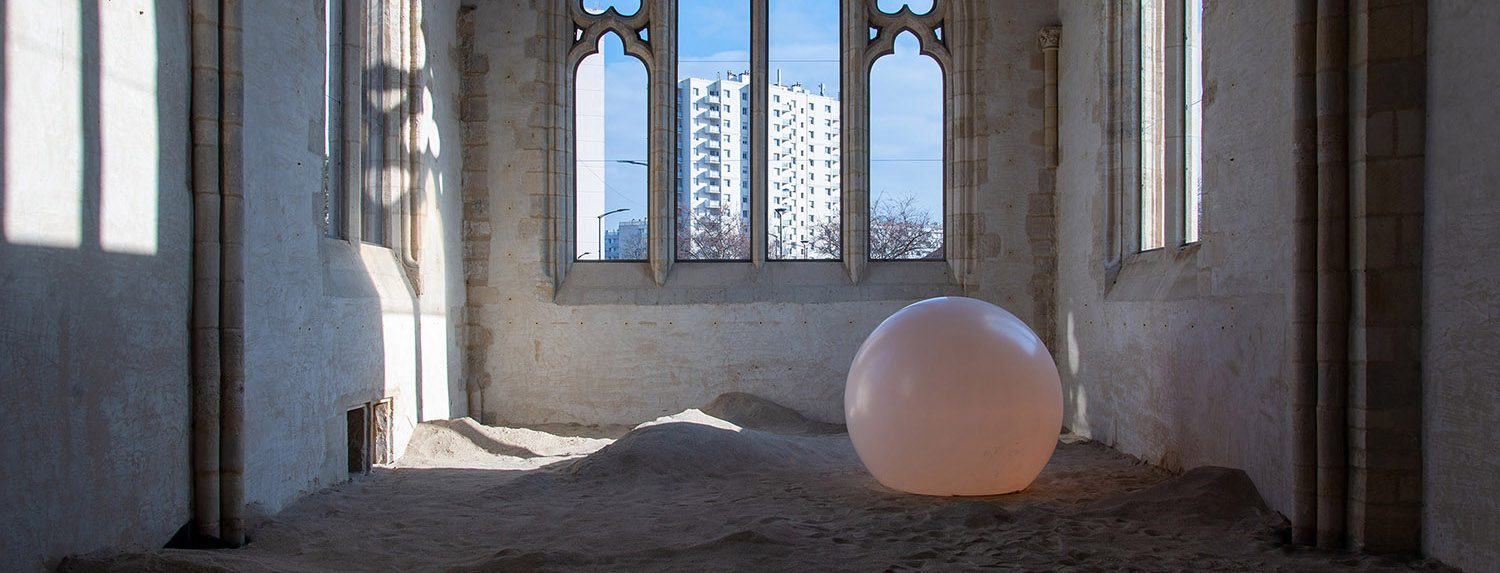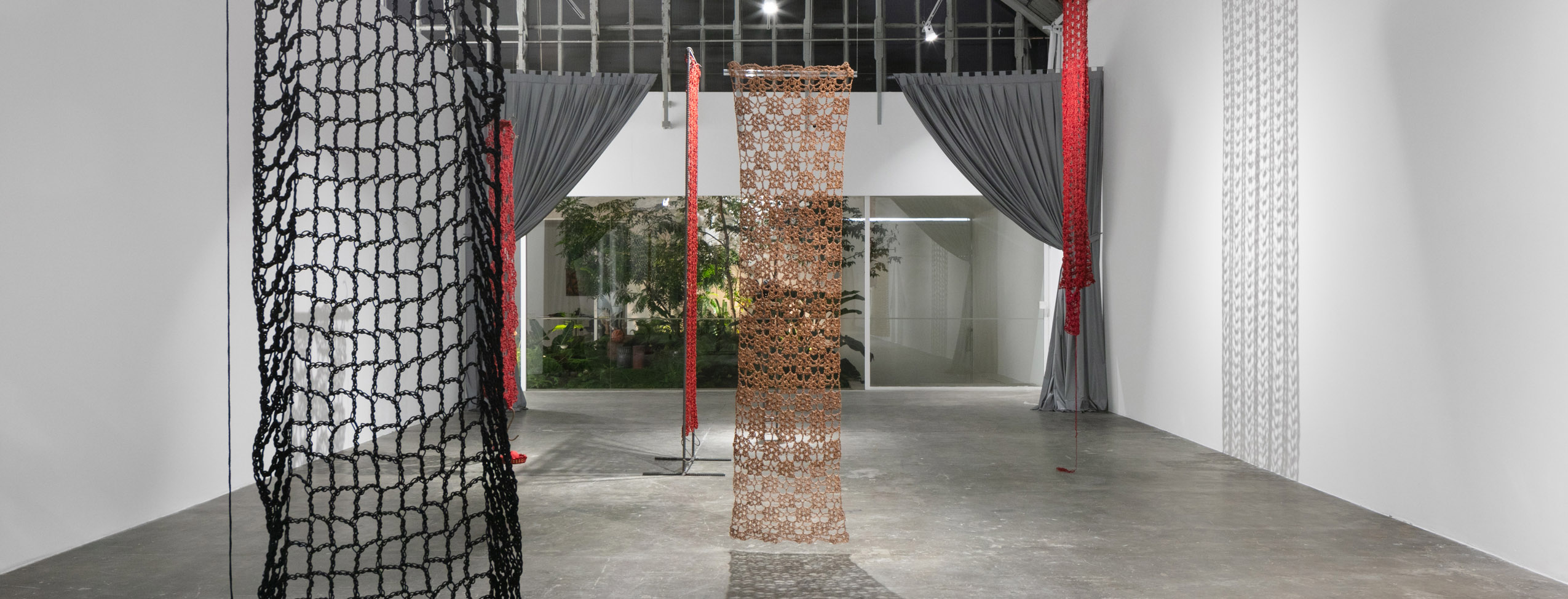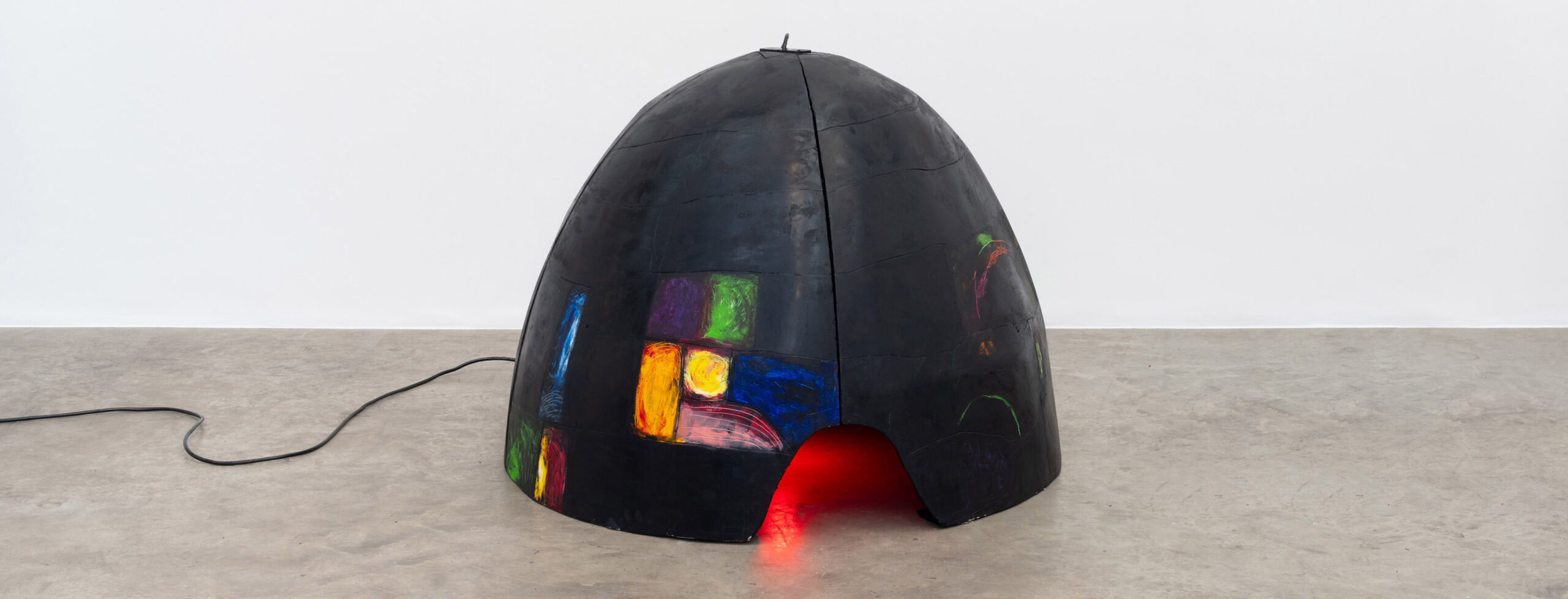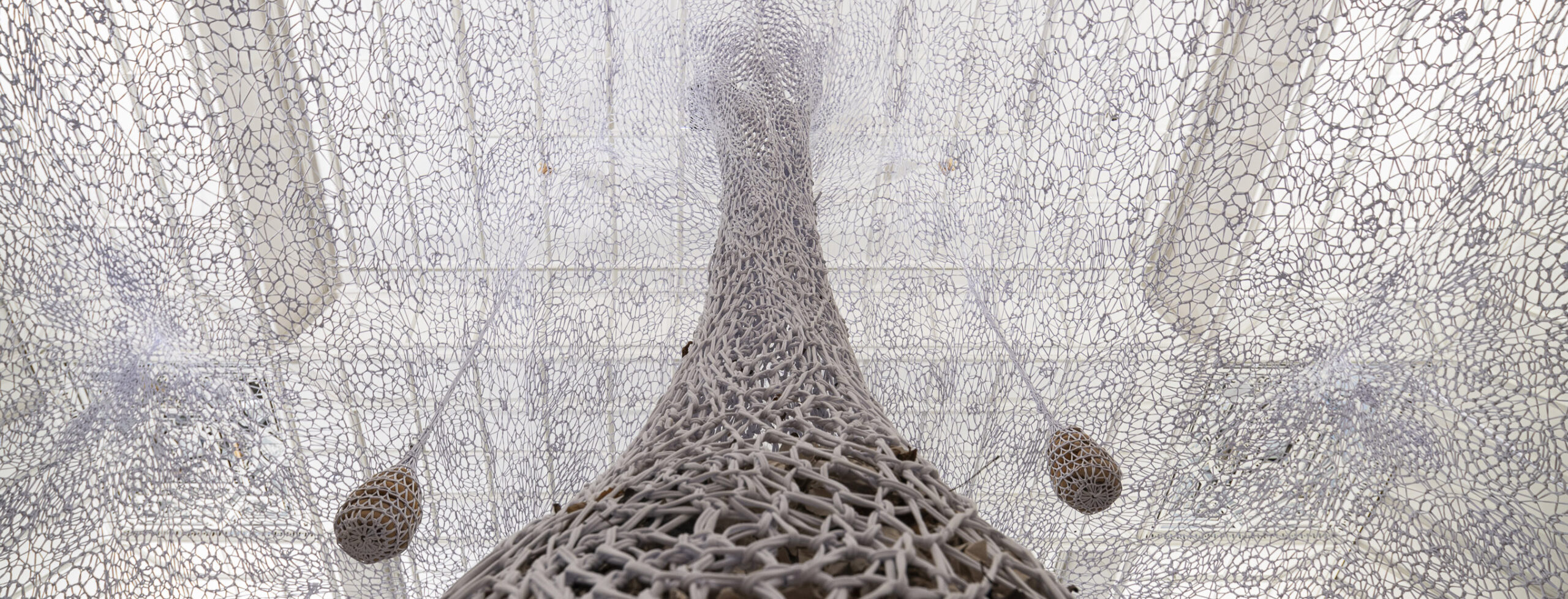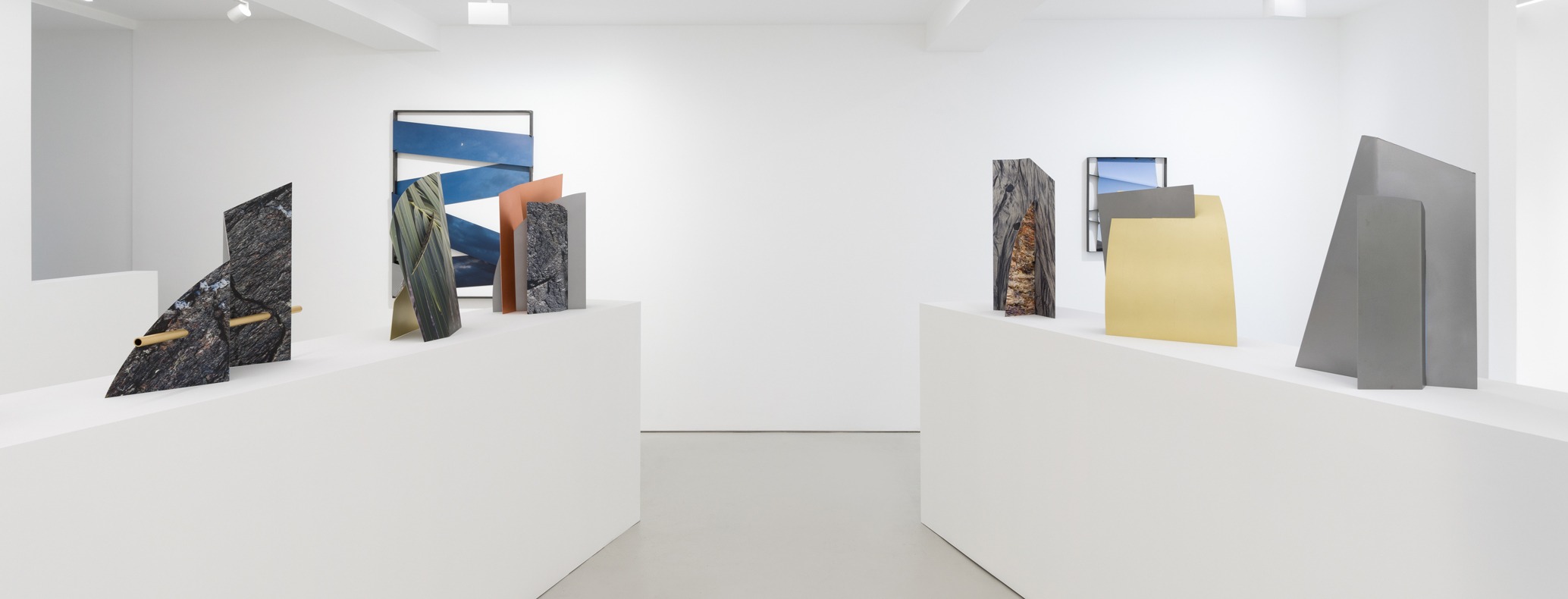CAMBRIDGE, MASSACHUSETTS MIT List Visual Arts Center Virgo (2022), the central and most provocative work in “The Great Learning,” pays homage to Gordon Matta-Clark’s building cuts, but with a difference. Where Matta-Clark sought to reveal untapped potential, Gómez-Egaña instead explores our moment of too much potential.
Matter and Spirit: A Conversation with Luana Vitra
Materials matter to Luana Vitra. She uses iron, copper, wood, feathers, and clay—materials embedded in the history, culture, and geology of her home region of Minas Gerais in Brazil—to explore our connections to the earth, how we are at one with its offerings and how we exploit them.
Katie Hudnall
PHILADELPHIA Museum for Art in Wood“Delight” might seem too twee a word for contemporary art parlance, but it certainly fits Katie Hudnall’s current exhibition. “The Longest Distance Between Two Points” features 16 sculptures made of salvaged wood, string, springs, and brass hardware, as well as four large drawings and a suite of eight smaller drawings, that all manifest a dark yet playful and whimsical aura.
Not Written in Stone
Somewhere between then and now and now and next, “Beyond Granite: Pulling Together” (2023) briefly transformed the National Mall in Washington, DC, boldly asking what an expanded vision of democracy might be.
Jardines distópicos: Una Conversación con María Ibáñez Lago
Con una vida que se desarrolla entre las calles parisinas y Buenos Aires, María Ibáñez Lago, artista plástica y escenógrafa, se formó en Escenografía y Pintura en la Ecole Nationale Supérieure des Arts Décoratifs, París, en el taller de Zao-Woo-ki y en Argentina tomó clínicas con Diana Aisenberg.
Rebecca Warren
NEW YORK Matthew Marks Gallery Installed on tilted plinths and dollies, each of Warren’s figures seems poised as if in mid-movement. Heavily worked surfaces trace the energy and marks of the artist’s hand while also capturing light and sustaining the sensation of fluid, mutable form.
Tom Bevan
NORTHERN IRELAND Down County Museum Assembled from cardboard or mountboard (most of it taken from the bases of fruit and vegetable boxes), the small forms were then collaged with found, painted, and drawn images and written commentary. Though these “building blocks” may recall simple children’s toys, they also contain a very strong sociopolitical axis that demands to be “read.”
Time Levels: A Conversation with Claudia Wieser
German artist Claudia Wieser works with photo-based wallpaper, ceramic tile, and other seemingly decorative elements to create environments filled with crisscrossing historical and biographical narratives. Working between art and utilitarian object, she considers the various components in her structures, which refer to art, architecture, design, film, and theater, as “individuals in a constellation.”
Otobong Nkanga
DALLAS Nasher Sculpture Center Along the cord’s length, there is a rhythmic evolution to the colors: one section dark and earthen like compost, becoming a stringy, mottled cream, then a beetroot purple, studded with seeds. It is also punctuated by a number of enormous, milky glass beads in analogous colors. From afar this gives the form the look of an oversize rosary.
Open Intervals: A Conversation with Lucila Sancineti
Lucila Sancineti, a visual artist trained at the University of Buenos Aires and a literature instructor, continuously explores ways of working with matter. Her interdisciplinary approach to sculpture and installation employs painting, textiles, ceramics, and biomaterials to extend our perceptions of ordinary encounters, objects, and experiences.



